

Foreword
Matt Bell Chief Economist
I’m very happy to present to you our first Quarterly Market Insights (QMI) of 2025, and the first since I joined Oliver Hume as Chief Economist.
The December 2024 Quarter QMI presents our summary of key indicators and market trends as well as our outlook for key land markets in 2025. It is based on the latest market data and our own proprietary market intelligence, developed by our in-house research team over the last 20 years and supported by a network of more than 80 sales staff collecting market data for land and townhouse estates across the country.
We supplement this market data with onthe-ground insights gained by constant engagement with our customers, clients and partners and by delivering over 400 residential communities throughout Victoria, Queensland and South Australia.
For me personally, it’s a particularly exciting time to join Oliver Hume to lead the Research team. As our CEO, Julian Coppini, lays out in this edition, Oliver Hume has invested heavily in the digital capabilities of the company and expanding our human capital. These investments continue to expand the Research team’s ability to deliver deeper insights into the future of markets for our customers and
clients, government and industry stakeholders and strategic partners and empowers them to anticipate the future and make strategic decisions.
I’m very proud to be part of an organisation that has helped the market deliver new residential property developments for over 70 years. There has never been a more important time to be part of the housing solution for all Australians. An active and dynamic residential greenfield market is key to ensuring we can meet housing requirements, both now and in the future, while also ensuring better affordability and delivering the types of housing Australians need and want.



Key Takeouts
Don’t underestimate the bounce
We should not underestimate the potential impact not only of falling mortgage rates on demand for new land and housing, but also the impact falling inflation has on strengthening household balance sheets and the related demand for new housing. (Page 10)
Victorian recovery on the way
We expect sales rates to improve materially and pricing incentives in the market to begin to move back to normal levels marking a return to price growth through 2025, particularly in the second half of the year. (Page 12)
The Great Australian Dream is changing
The median lot size in Metro Melbourne has shrunk by nearly 30%, dropping from 495sqm in 2009 to just 350sqm in 2024. (Page 20)
Lower interest rates to boost established housing values and transactions, but not by much
The industry should brace for the possibility that rate reductions have a somewhat muted impact on home values and transaction activity this year. (Page 22)
Data
will continue to drive Oliver Hume’s
success
Using data to understand our customers is key to delivering outstanding client results. Combining qualitative and quantitative data ensures that every marketing decision we make is backed by insights that drive results. (Page 24)
We’re Building a Proptech Superpower
Julian Coppini Chief Executive Officer
The last 12 months have been one of the most critical in Oliver Hume’s 70-year history as we accelerated our strategy to build a data-driven proptech group to support our client’s growth ambitions like never before.
This investment in digital platforms is critical to enhancing the unique value proposition in our proprietary, decades-spanning data sets and will leave us well-positioned to maximise opportunities in the next wave of AI-driven disruption.
Our investments in technology and data have been matched only by our investment in our people’s skills and our team’s expansion to meet the challenge of increasingly complex markets and demand for our services.
Seeing multiple young executives progress through our Leadership Development Program has been one of the most rewarding aspects of my job over the last 12 months, and it gives me tremendous confidence that we are building a new generation of property industry leaders.
Building Foundations
Oliver Hume’s primary strategic focus over the last 12 months has been to continue our multi-
year investment in our digital capabilities while enhancing our human capital by expanding our research and marketing teams. It is a big project with lofty goals to cement Oliver Hume as one of the most innovative companies in the Australian property industry.
This strategic focus has not detracted from the day-to-day business of delivering outstanding results for clients across our key markets. We do this by leveraging our data and experience to advise clients across the property development lifecycle, from site acquisition to determining the optimal mix of products and lots for market demand and, finally, delivering outstanding sales and marketing results.
While 2024 was another challenging year for the Victorian land market, we have been focused on meeting these challenges headon by providing frank and fearless advice to clients to support them through demanding conditions. Thankfully, we are seeing the potential for more buoyant market conditions in the medium to long term and look forward to working with clients to maximise new opportunities.
Elsewhere around Australia, our investment in people and technology was one of the major drivers behind the success of our businesses in Queensland and South Australia. Both businesses achieved stellar results in 2024, with South Australia now commanding about 30% of the market in just our second year in operation.

Looking Forward
Looking ahead to the rest of 2025, our major priorities are expanding market share and exploring new regions, particularly Western Australia. Together with our existing offices in Victoria, New South Wales, Queensland and South Australia, this will give us a truly national footprint.
Our existing team of experts will be enhanced by employing a digital transformation expert in the next couple of months to ensure we continue our relentless innovation approach and stay ahead of the competition. This new appointment is in addition to the recent commencement of a Chief Economist, Matt Bell, to beef up our research team and the appointment of Mitchy Koper to drive our brand awareness and positioning.
Strengthening our industry advocacy is another major focus, especially around affordability
issues and government legislation that impacts the housing market. We will make sure our voice is heard when it comes to advancing the interests of the industry and homebuyers. Additionally, we will continue to work wonbank lenders to offer innovative financing solutions that help first-time buyers secure homes despite their borrowing limitations.
One of the biggest challenges we face is the ongoing housing affordability crisis, which is particularly affecting first-time buyers. To address this, we are committed to finding innovative solutions, including developing new housing models, exploring satellite cities, and adapting to shifting buyer preferences, including the increasing demand for energyefficient homes and spaces for home offices.
We look forward to sharing the journey with you.
2025 Land Market Outlook
Matt Bell Chief Economist
Land markets across the country spent 2024 stymied by the same high interest rate environment that has impacted markets since 2022.
Land market performance has varied considerably since mortgage rates began rising in May 2022. Sales volumes fell across all markets, but the fall was particularly heavy in Victoria with sales falling to less than 20% of peak levels by the end of 2022. Headline prices have remained stagnant in Victoria since then while incentives increased, while South East Queensland and Adelaide has seen significant median lot price growth. Sales volumes also bounced back to varying degrees through 2023 and 2024 in South East Queensland and Adelaide while they’ve remained essentially stagnant in Greater Melbourne.
Early 2025 has seen a significant shift in the interest rate outlook. While there were differences in performance across state markets in 2024, December quarter results have shown early signs that we have reached the bottom of the current cycle at a national level and provides a solid base for of a much stronger 2025 for both sales volumes and price growth.
Supported by a lower interest rate environment, continued historically strong population growth, a robust labour market and

an undersupply of new housing across much of the residential sector, the outlook for vacant land markets is as strong as it has been since the first half of 2022.
Inflation and Interest Rates
Cash and mortgage rates are now widely expected to fall throughout 2025. A belowexpectations December quarter CPI result has most of the market now expecting the RBA to commence their easing cycle from February, with somewhere between 3 and 4 rate cuts (75 and 100 basis points) forecast by December 2025.
The impact of increasing interest rates (and rising household costs it was designed to fight) in 2022 on buyer confidence was swift and dramatic across the country. Even though land prices held up reasonably well, sales volumes fell heavily across all markets.
We should not underestimate the potential impact not only of falling mortgage rates on demand for new land and housing, but also the impact falling inflation has on strengthening household balance sheets and the related demand for new housing.
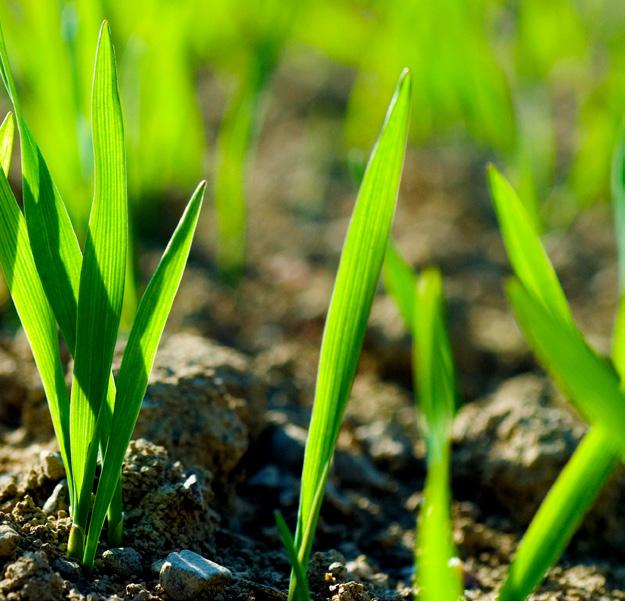
Population growth & undersupply
Population growth remains a strong driver of underlying housing demand. While population growth has eased from the post-COVID highs, the current numbers of new people added to Victoria in the 12-months to June 24 remain higher than any other 12-month period in the previous 40 years. Even though forecasts for an easing of population growth have consistently underestimated its ongoing strength, official forecasts are still for a level of growth over the next 5 years in VIC, QLD and SA that would be considered historically strong. This means the underlying requirement for housing will remain historically high across all markets.
High construction costs, an undersupply of new land, and high interest rates have dampened new dwelling approval and completion numbers. New dwelling construction was down across all markets in 2024 and is significantly below the Housing Accord’s average annual target (240,000).
The fall in new housing supply is most acute in the apartment market. High construction and land costs has hit this sector particularly hard forcing approvals nationally to decade lows. This lack of new supply is likely to support both volumes and prices in the vacant land sector through 2025 as it remains a key component of new housing supply.
Affordability
While Adelaide and South East Queensland land markets have benefited from their affordability advantage over Melbourne over the last few years, this has rapidly eroded as prices rose strongly in these markets.
The South-East Queensland median lot price surpassed the Victorian level for the first time in the December 2024 quarter. The median lot price rose to $388,000 in South East Qld compared to a slight fall to $385,000 in Victoria. In $/sqm terms, while Victoria is still the most expensive market of the three, the gap has shrunk from over $300/sqm at the end of 2021 to just over $100/sqm in the December 2024 quarter.
This is not just a phenomenon experienced in land markets but has also been reflected in established housing markets. In established house markets, Melbourne commanded a 40% price premium over Brisbane in 2016. This has fallen to zero in 2024.
Resale Stock
In some markets, a key contributor to pressure on both sales volumes and prices has been the significant volume of resale inventory in the market.
In Victoria the massive pull-forward of demand by the HomeBuilder stimulus in 2021 and 2022 combined with subsequent weak demand has led to several thousand lots still currently available in the resale market. Clearing this resale inventory is a crucial component of returning demand for new product. This will initially be driven by a return to market by investors and builders, driven by lower rates and easing pressures on building costs, with retail purchasers to follow.
2025 Land Market Outlook
Victoria
Victoria has lagged other states in both sales volumes and price growth during this downturn. While the state has some macroeconomic challenges ahead, some of the strongest forecast population growth in the country, the largely completed workthrough of pulled-forward HomeBuilder demand, and the best relative affordability position compared to other states in decades means Victoria is in a strong position to take advantage of the falling interest rate environment.
We expect sales rates to improve materially and pricing incentives in the market to begin

South East Queensland
Unlike Victoria and Adelaide, South East Queensland had a very strong 2024 in terms of both price and sales volumes. Although December quarter sales dipped slightly, 2024 total sales were up 38% over 2023 levels and only 7% below the peak post-COVID year of 2021. At the same time, median lot prices rose by 16% and $/sqm rates rose by 12%.
While the fundamental drivers of interest rates and population growth are expected to remain

to move back to normal levels marking a return to price growth through 2025, particularly in the second half of the year.
Adelaide
The smallest of our three key markets had a mixed December quarter, with strong price growth combined with a fall in sales volumes. However, this is largely due to projects selling out and a reduction in available stock rather than any fundamental reduction in demand. Like Victoria, supported by falling interest rates, we expect Adelaide sales volumes and lot prices to increase in 2025 compared to 2024.
supportive of continued strong performance, the market has lost its previously significant affordability advantage over Melbourne which is likely to mitigate the impact of rate cuts and ongoing population growth. That said, we still expect resilience in the South East Queensland market, with interstate and overseas migration levels to remain strong and falling interest rates to support sales rates and median price growth.


Victoria’s Englobo Market Set For Better 2025, But Challenges Remain
Peter Vassallo Managing Director Development Sites
After a sustained period of subdued activity, Victoria’s englobo land market is at last showing the early signs of recovery, despite a range of persistent challenges that continue to hamper confidence.
As we enter 2025, we are cautiously optimistic the sector’s rebound will be underpinned by a mix of government initiatives and a gradual return of buyer confidence. Our optimism is supported by a tangible improvement in deal flow in the last few months of 2024, despite the usual seasonal challenges.
While we are confident of a better year ahead, high borrowing costs, rising construction expenses, and infrastructure coordination issues are hindering a more broad-based recovery.
A key factor in the recovery has been the Victorian Government’s new 10-year plan to deliver 30% of new homes in greenfields areas. This plan will enable the development of 180,000 homes over 27 new Precinct Structure Plans (PSPs), aiming for a balanced mix of residential and employment land.
The government is working to ensure infrastructure is delivered alongside land development, which is crucial for supporting new communities.
In collaboration with local councils and the development industry, the government is focused on unlocking constrained land and reviewing existing PSPs to identify opportunities to increase housing supply where infrastructure is already planned.
Future PSPs will include staging provisions to ensure infrastructure keeps pace with land release, providing a more predictable and structured development process.
While many challenges remain, the gradual recovery in market confidence, along with strategic government support and planning, provides a hopeful outlook. If these efforts continue, Victoria’s land market could stabilise and sustain growth for years to come. This ongoing effort to balance land development and infrastructure delivery is crucial to the future success of greenfields projects.
Victoria
Market Overview
Sales Volumes
December quarter sales volumes for Metro Melbourne rose from September quarter levels and were the strongest in 2 years, although still well below recent highs (and about 40% below long-term average sales levels). Total 2024 sales were up 10% on 2023 levels after consecutive years of falls in excess of 50% in 2022 and 2023. At a corridor level, rises in volumes in Melton, Casey and Cardinia more than offset the fall in sales in Hume.
Land Prices
The median lot price in Melbourne eased slightly from $408,000 in September to $405,000 in the December quarter. Headline prices rose just 1.5% over the 12 month period and likely fell in net terms as financial incentives rose for purchasers throughout 2024.
The story was largely the same in $/sqm terms, with the median $/sqm rate only marginally higher than the second quarter of 2022. This stagnation of prices over the last 2 years has seen the price premium to lots in South East Queensland fall from around 40% in 2022 to just 13% now.
Median lot prices eased in Hume, Melton, Whittlesea, Wyndham and Cardinia and rose in Casey. Time on market remains historically high with the average lot spending 279 days on market, the highest value recorded in over a decade.
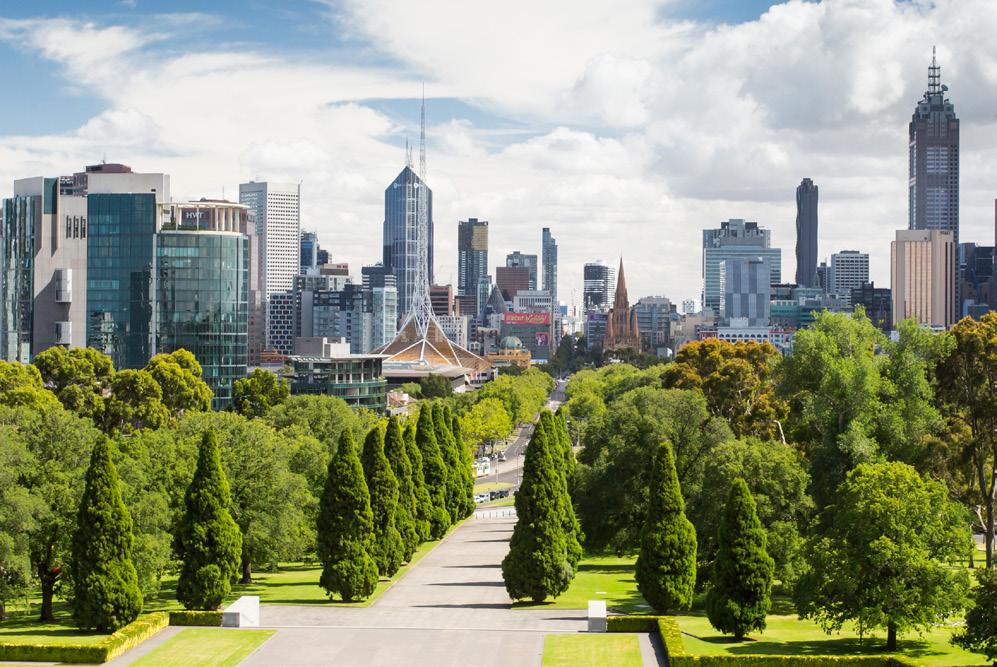
Metropolitan Melbourne Land Prices
Median Lot Price ($) Land Price per Square Metre ($/sqm)
$340,000 $1,300 $1,250 $1,200 $1,150 $1,100 $1,000 $950 $900 $850 $800
$405,000 $1,113
Source: Oliver Hume Research
Source:
Median Lot Prices by Suburb (Gross) December Quarter 2024
Source: Oliver Hume
Sqm
Mickleham
$441,000
Fraser Rise
$426,500
Beveridge
Wollert
$454,500
Craigieburn
$455,000 N/A
Greenvale
Tarneit
$423,000
Mambourin
$387,500
Werribee
$427,000 N/A
Officer $496,000 $500,000
Berwick
$577,000 N/A
Clyde
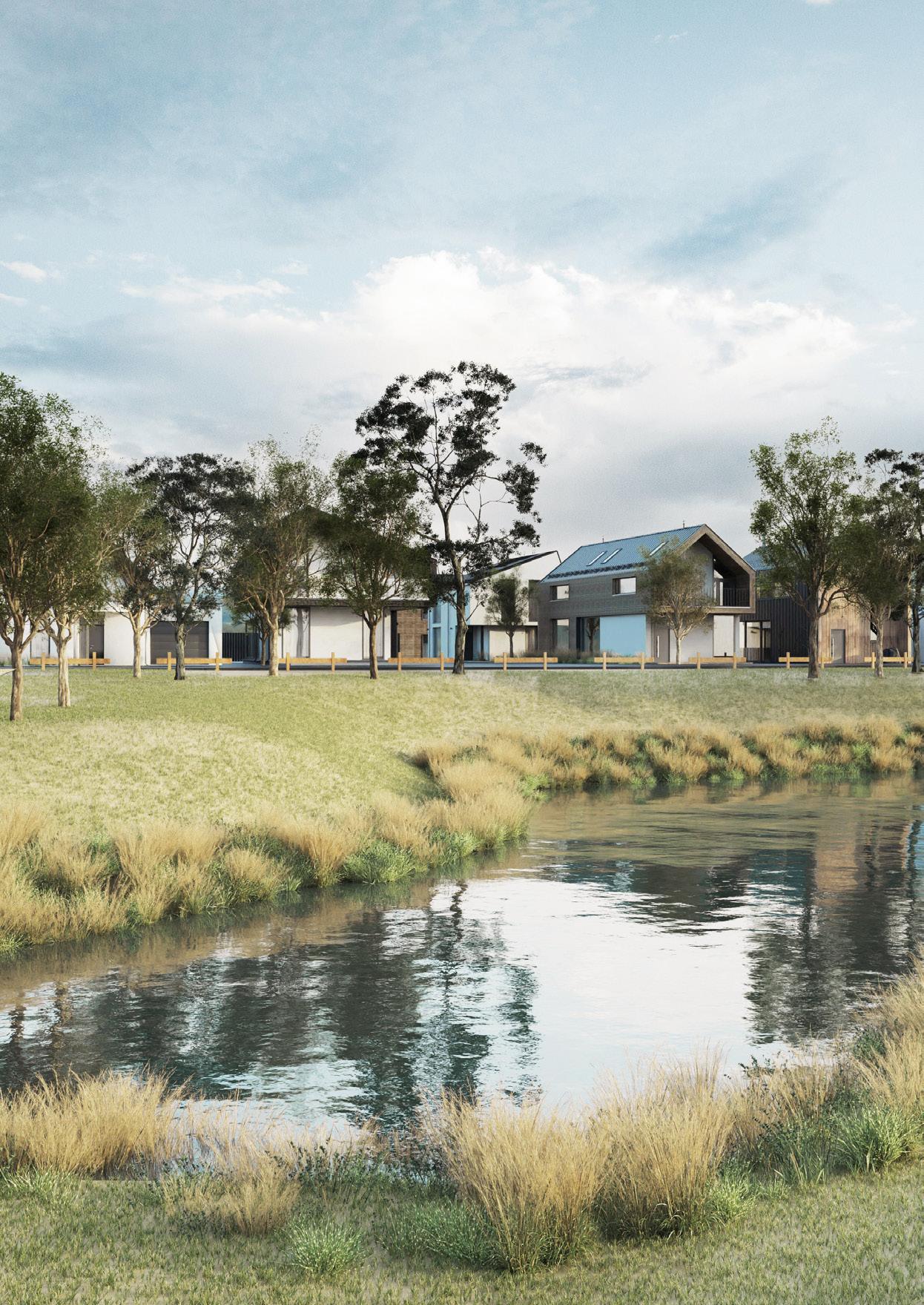
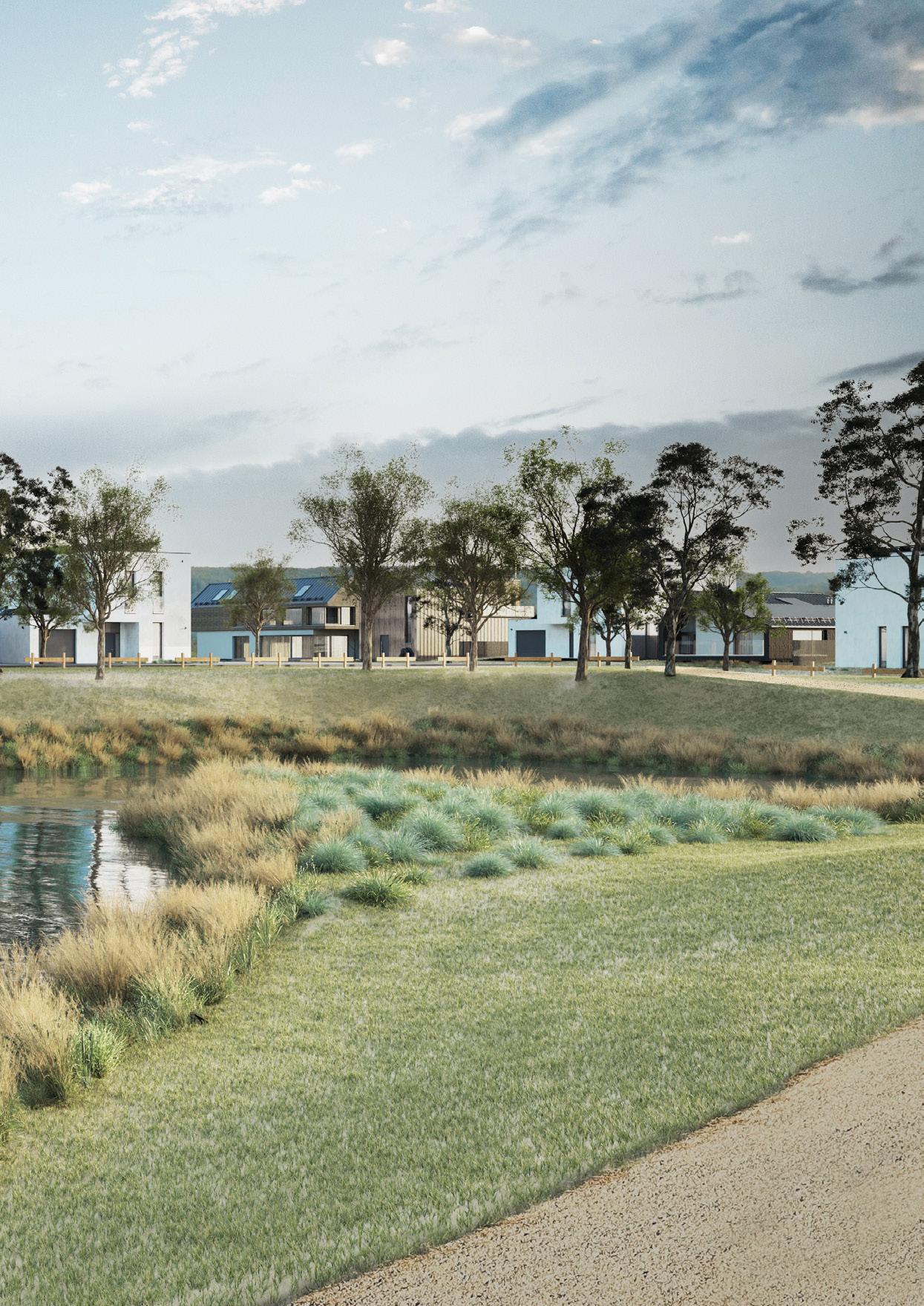
Oliver Hume is pleased to be working with Geelong Forum Investments and Torquay Rd Developments on the Mattana project at Mt Duneed in Victoria.
Mattana is situated in one of Geelong’s most popular suburbs with the convenience of multiple schools, Epworth Hospital, Aquatic Centre, Library, Armstrong Creek Shopping complex and many beautiful parklands.
A short drive to the Ring Road makes commuting to Melbourne, or the Surfcoast, a breeze. Homesites now available from $284,500 to $378,000. Visit mattana.com.au.
The Shrinking Lot How Melbourne’s Greenfield Market is Changing
Ryan Woock Senior Research Manager
Melbourne’s residential land market has undergone a dramatic transformation over the past 15 years.
The median lot size in Metro Melbourne has shrunk by nearly 30%, dropping from 495sqm in 2009 to just 350sqm in 2024.
Several factors have contributed to this shift, driven by the complex interplay of economic trends, demographic changes, government policies and supply-demand dynamics that are transforming where and how people choose to live.
The Supply-Demand Imbalance
One of the biggest factors behind shrinking lot sizes is Melbourne’s rapidly growing population. Fuelled by overseas migration, population growth has consistently outpaced the release of new land.
To meet demand and maintain a balanced market with diverse housing options, the Greater Melbourne area requires between 15,000 and 20,000 new dwellings in greenfield areas annually.
Nevertheless there has been a significant slowdown in supply of residential land through Precinct Structure Plans (PSPs) across Greater
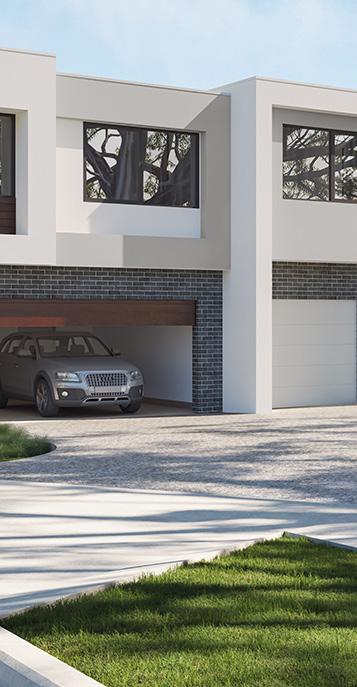
Melbourne in recent years.
Between 2008 and 2018, an average of approximately 28,230 lots were approved and released each year. However, this dropped to just 12,359 lots per annum between 2019 and 2023.
In 2024, that figure is expected to fall once more, dropping below 7,000 lots.
This shortfall has intensified pressure on available land, driving up prices and constraining affordability.
The Rising Cost of Homeownership
The financial realities of homeownership have also contributed to smaller lot sizes. In 2009, the median lot price in Metro Melbourne was $183,000.
By 2024, that figure has skyrocketed to
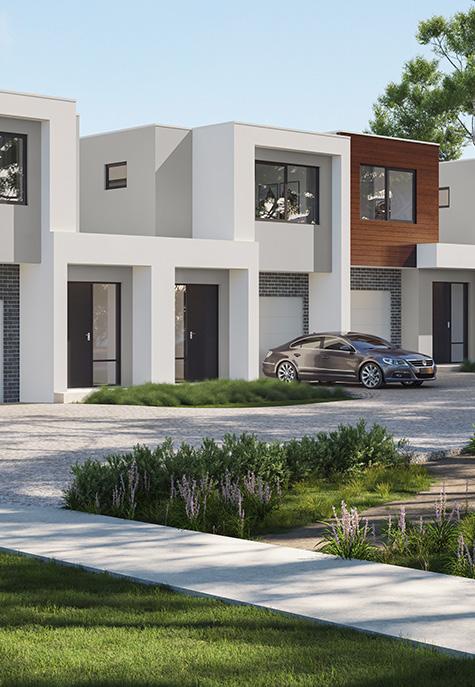
$408,000, an increase of approximately 153%.
At the same time, construction costs have also surged. According to the Australian Bureau of Statistics, the average cost to build a new house in Victoria has increased by around 82% over the past 15 years.
As a result, many buyers have chosen smaller lots to keep costs manageable.
Changing Lifestyles and Housing Preferences
Beyond economic pressures, shifting demographics and lifestyle preferences are also influencing lot sizes.
Smaller households, including downsizers, single-person households, and couples without children, are becoming more common. In 2024, Oliver Hume’s customer survey data showed that over one-third of purchasers were from two-person or smaller households and over fifty-nine percent were from households with three or fewer people.
Many of these buyers prioritize flexibility and convenience over large backyards, making smaller lots more attractive. Additionally, lowmaintenance living has gained popularity, with some preferring compact homes that require less upkeep.
The Future of Melbourne’s Land Market
As land supply tightens and affordability challenges persist, Melbourne’s greenfield market will continue to evolve.
Addressing these challenges is key to maintaining Melbourne’s liveability and housing affordability in the years ahead.
The greenfield markets play an essential role in meeting housing demand and addressing the city’s growing needs.
Governments and developers must find ways to balance supply with demand while ensuring a variety of housing options remain accessible.
In the meantime, one thing is clear: The Great Australian Dream of owning a housing on a traditional quarter-acre block is changing.
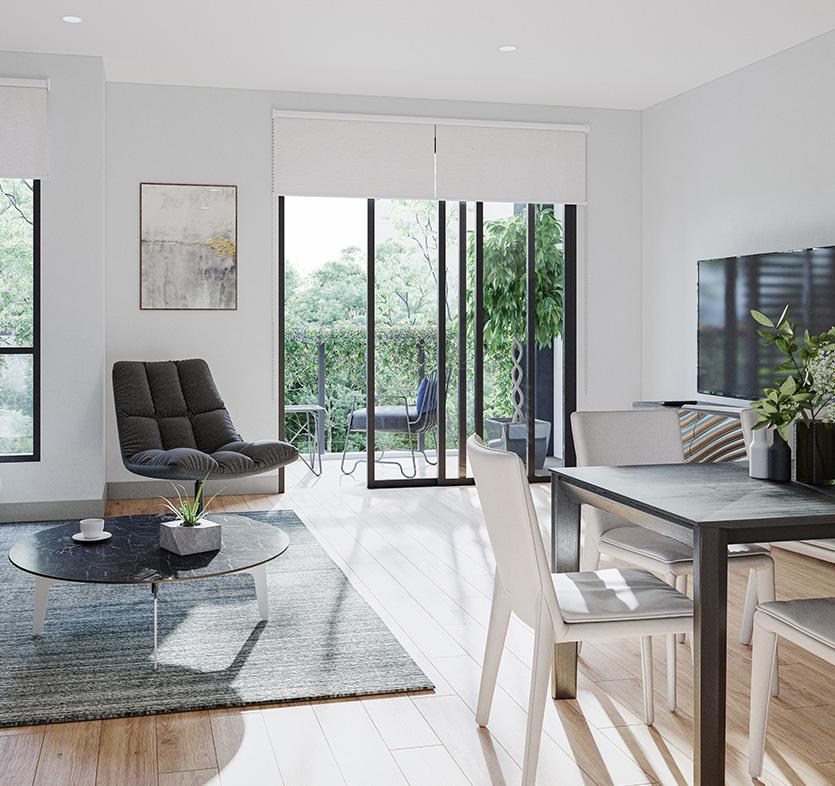
Residential Housing Market Outlook
Eliza Owen Head of Residential Research
CoreLogic Australia
As we step into 2025, the economic landscape is shifting. Pandemic-driven trends like high inflation and overseas migration are easing. The RBA cash rate is likely to be cut multiple times in 2025, with lending policies playing a role in how this impacts the market. Unemployment is set to rise, but those with secure jobs will enjoy higher real incomes. Residential construction is in transition— workloads are high, but new projects are slowing. So what does it all mean for the market?
Lower Interest Rates to Boost Housing Values and Transactions, but Not by Much
Interest rates might be cut in early 2025 as inflation continues to drop, with annual core inflation falling to 3.2% in November (below the RBA forecast of 3.4% for December). Two of the big four banks are currently expecting a rate cut in February. However, the industry should brace for the possibility that rate reductions have a somewhat muted impact on home values and transaction activity this year. Even if the average mortgage rate drops by 125 basis points (the lower-bound of forecasts for the cash rate at the end of 2025), the

resulting 3.1% cash rate is higher than the preCOVID, decade average (2.55%) that supported strong lending volumes in the 2010s.
A potential window into how Australians would respond to higher borrowing capacity is the Stage 3 tax cuts from 2024. While this would have boosted borrowing capacity through higher net income, the housing market saw an anaemic response, with growth in values slowing from June 2024.
Lending Policy Could Amplify or Nullify the Impact of Rate Reductions
Changes to macroprudential settings will also affect the availability of housing finance. Lowering the mortgage serviceability buffer from 3.0 percentage points to 2.5 percentage points (a reversal of the increase in October 2021) could boost home buying activity through increased borrowing capacity. However, this action from the regulator isn’t guaranteed. According to APRA’s November statement, the risk of financial shocks hasn’t abated, and regulators have warned that high household debt levels are a concern. If household debt levels rise as interest rates fall, APRA could introduce new measures, such as limits on high loan-to-value ratio (LVR) or high debt-to-income (DTI) lending, similar to what the RBNZ has implemented in New Zealand.
Unemployment to Rise, but Unlikely to Negatively Impact Housing Values
The RBA forecasts unemployment to rise to 4.5% by the end of 2025, but so far the labour market remains tight, with the unemployment rate at just 4.0% (the pre-COVID, decade average was 5.5%). Assuming that the labour market does

not expect much of an impact on the housing market. This is because periods of rising unemployment trigger lower interest rate settings to stimulate the economy. For those who remain employed in 2025, lower inflation will also provide a boost to real incomes that could be put towards a deposit or housing transaction costs.
Rising periods of unemployment have historically impacted younger Australians (15–24-year-olds) more than other age groups, and these younger Australians are more likely to be concentrated in the rental market than in home ownership, thus having more of an impact on rental demand. However, there may be localised impacts on housing demand and value depending on industries and regions that face greater job loss.
Net Overseas Migration Will Slow, Taking Some Demand Pressure Off the Rental Market
Net overseas migration peaked at 556,000 in the year to September 2023 and fell to 446,000 by June 2024. According to the Centre for Population, it is expected to continue declining to about 340,000 by mid-2025 as the ‘COVIDcatch up’ effect fades and more short-term migrants leave.
While overseas migration isn’t the only factor flowing through to rental demand, significant changes in migration patterns have impacted the market. Areas with high migration saw a substantial increase in rents in 2022 when border restrictions eased. Now, the slowdown in overseas migration appears to be reducing demand more quickly in these same rental markets.
Residential Construction Will Remain Low, but Cost Pressures Could Stabilise
New home approvals are low, with only 169,000 new dwellings approved by November 2024—a 24% drop from the decade average and 30% below the Housing Accord’s average annual target (240,000). High construction costs, land costs, and interest rates, along with potentially diminished buyer confidence in the new home sector, have dampened approval numbers. There are some signs of a pickup, with dwelling approvals bottoming out in early 2024, which is most obvious in high capital growth markets like WA, SA, and QLD.
Interestingly, about 250,000 approved dwellings are still incomplete. The slowdown in building activity will eventually ease capacity constraints, allowing for more timely delivery of homes and clearing the backlog. However, competition from the public infrastructure sector for labour and input materials is likely to remain substantial, keeping costs elevated. Continued government support and business investment are essential to boost productivity in residential construction.
Overall, despite rate cuts and easing inflation, 2025 is expected to see lower value growth and sales numbers than last year. This could involve a shallow downturn in values at the start of the year, followed by a mild recovery as inflation and interest rates move lower, real incomes rise, and housing supply remains low.
How Our Data Supported a Big Client Win
Nikki Grundy Strategic Marketing Manager
Oliver Hume has proudly worked with the team at HB Land for more than three years, so it was no surprise to us when they recently collected the 2024 Campaign of the Year Award at the realestate.com.au Excellence Awards for the Tillerman project at Park Ridge.
The award recognises marketing campaigns promoting a land estate via a Project Profile on realestate.com.au during FY24. Significantly, finalists and winners for the data-driven awards are ranked based on on-site performance metrics, not submissions.
Oliver Hume’s proprietary data, sourced from dozens of projects and thousands of transactions, played a key role in the proptech-driven approach to sales and marketing at Tillerman and was an essential contributor to the positioning and timing of the project.
Using data to understand our customers is key to delivering outstanding client results. Combining qualitative and quantitative data ensures that every marketing decision we make is backed by insights that drive results.
This data-driven approach allows us to build confidence in the projects we market and ensures that buyers feel in control of their journey.
The metrics that factored into this award — including leads, display performance, and phone lead attribution — reflect how impactful our campaigns have been in connecting with

property seekers. Despite the limitations of character counts in digital ads, we’ve made it our mission to deliver clear, detailed, and impactful stories across all marketing channels.
The results speak for themselves. Tillerman Park Ridge not only collected an award but sold out well ahead of schedule. This success proves the power of data and strategic marketing in driving real, measurable results.
Nikki Grundy (Oliver Hume), Julie Payne (HB Land) and Jasmyne Mehrton-Johnson (Oliver Hume) collect an award for HB Land’s Tillerman project.

Queensland
Market Overview
Sales Volumes
The volume of land sales fell in the December quarter 2024 in what was a slightly slower end to a strong year. The fall in sales was due largely to a lack of new stock coming to the market in the month of December, particularly in corridors with higher levels of affordability.
Although sales volumes declined throughout the year, total 2024 sales were 31% higher than 2023 levels and 55% higher than 2022 levels as strong population inflows continued and an affordability advantage over Melbourne persisted until late 2024.
“The Queensland market is enjoying a period of healthy equilibrium with good demand and a strong supply of new stock. As a result of the steady prices increases in recent years demand is primarily underpinned by second home buyers with first home buyers struggling to meet higher deposit and loan serviceability levels. We are still seeing plenty of demand from first home buyers, but higher interest rates make it difficult to finance and complete purchases. We expect the strong momentum to continue into 2025 and affordability levels to improve as interest rates come down. We don’t see any supply issues on the horizon with developers working through approvals in an orderly fashion.”

Dan Ross General Manager Queensland & Northern Territory
Land Prices
The median lot price in South East Queensland pushed to a new high in the December quarter even as volumes fell. All saw increasing land prices, with the strongest growth in Redlands, Moreton Bay and the affordable corridors of Logan and Ipswich. Annual price growth in median price terms was 13% in 2024, right in line with the annual change in established homes in Greater Brisbane of 12%.
The price in $/sqm terms has grown in line with median price rises as lot sizes sold across South East Queensland has remained relatively constant at ~420sqm since 2018. Continued supply and robust demand for lots sized between 400 sqm and 500 sqm remains throughout the growth corridors.
South East Queensland Vacant Land Sales (Quarterly)
Oliver Hume Research
South East Queensland Land Prices
$395,000 $982
Source: Oliver Hume Research
Source:
South East Queensland
Median Lot Prices by Suburb (Gross)
December Quarter 2024
Median Price
$395,000 Commonly Sold Lots 12.5 x 30m 10 x 30m 12.5 x 32m
$982 per sqm Land Price per Sqm
Median Size
420 sqm
Source: Oliver Hume
Walloon
$302,000
$318,000
Redbank Plains
$350,900 N/A
Greenbank
Caboolture
$410,000
Morayfield
$415,000
Deebing Heights
$368,000
Ripley
BRISBANE GOLD COAST
Victoria Point
Park Ridge
$398,000
South Maclean
$352,625
Digital-First Approach Drives Oliver Hume to 30% Market Share in South Australia
Eliza McGrath Project Sales Consultant
When Oliver Hume launched in the South Australian market in mid-2022 we wanted to ensure that we gave our clients and partners something different - a genuine competitive advantage.
We are very proud to have achieved that goal with our strong focus on digital solutions and in-depth market research helping us to beat even our own expectations by achieving a 30% market share in our second full year of operations.
A key part of our success has been the development and utilisation of complex sales and marketing systems that reflect changing purchaser preferences and the need to take a digital-first approach to the increasingly complex process of securing and registering buyers.
The value of these systems and processes has been particularly evident with the standout success of The Quarter project Morphettville where we have worked closely with the Villawood Properties team to achieve outstanding results for the client and buyers.
The Quarter is a $350 million revamp of the historic Morphettville Racecourse that was launched in March 2024.
A comprehensive and highly effective prelaunch marketing campaign generated exceptional demand that need to be carefully managed to ensure the expectations of all stakeholders were met.
The initial release of nine properties to a VIP database was managed via an online registration portal with more than 100 buyers entering their details. Critically, the portal allowed time-stamped entries to help prioritise buyer and create an orderly process for allocating properties.
The system has allowed us to manage a large volume of enquiries while achieving record sales results and prices as it was rolled out across subsequent releases of the project.
Prior to the release of The Quarter the highest price paid for a home in Morphetville was $1.58 million. That record has now been eclipsed multiple times with the current highest price sitting at $2.72 million.
More Growth To Come
Oliver Hume is currently engaged in eight projects across South Australia, with a further four to come online in 2025. We will continue to grow our staff with our current 17 employees expected to grow to grow to close to 25 by the end of the year.
While we have been very pleased with our achievements to date, we remain very optimistic about continuing to grow our presence in the market and expanding our penetration into the home-grown development community.
We already have tremendous relationships with a host of national developers like Villawood Properties and Wel.Co but believe there is a huge opportunity to work more closely with local developers and bring our expertise to more developers.
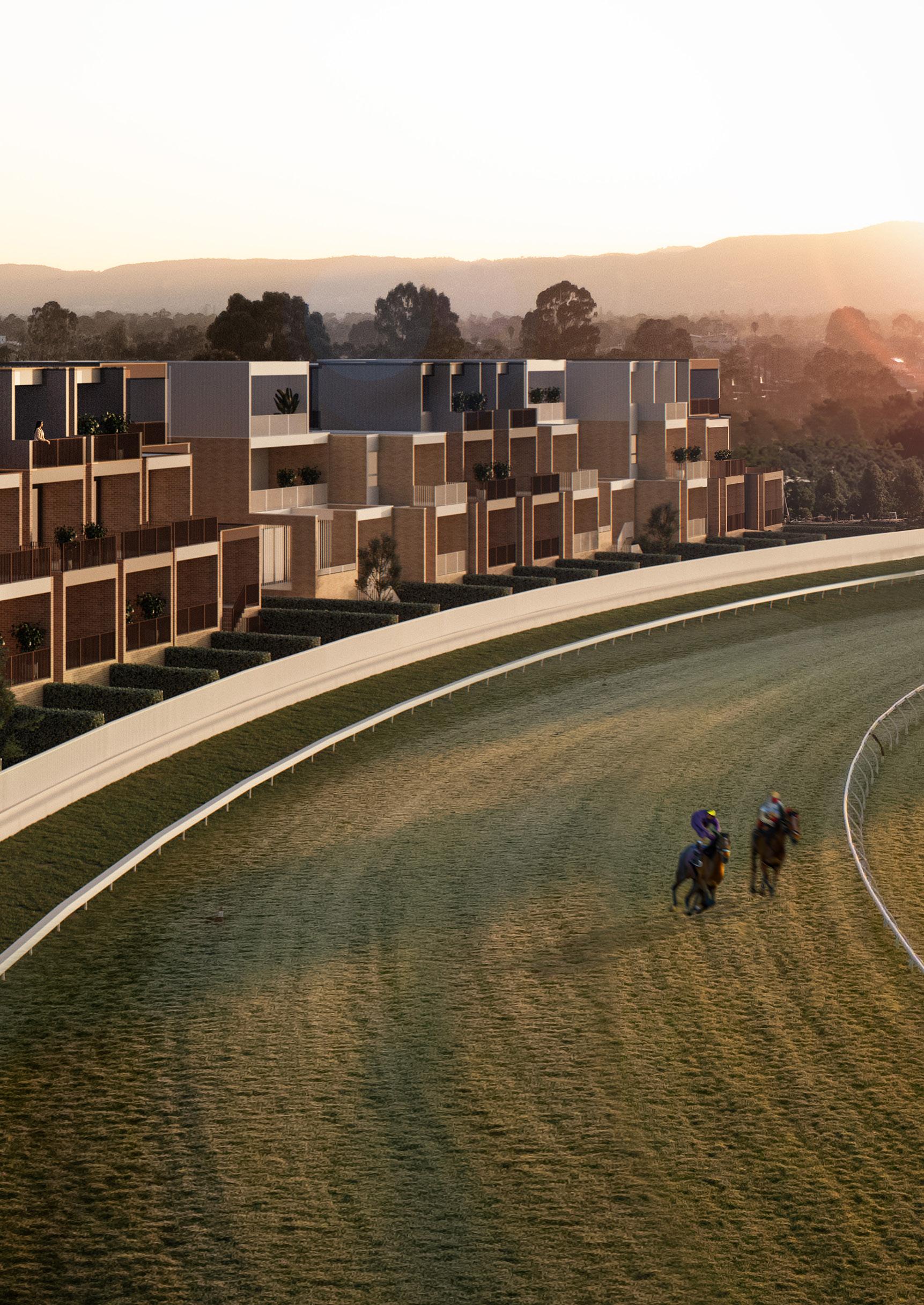
The $350 million The Quarter at Morphettville is being developed by Villawood Properties in a joint venture with the South Australian Jockey Club and superannuation giant Hostplus
South Australia
Market Overview
Sales Volumes
The volume of land sales fell relatively heavily in the December quarter 2024 as stock sold out in key projects and corridors and the market struggled to get new product released due to more difficult topography in the south and water infrastructure limitations in the north. Sales volumes fell particularly heavily in Playford and Onkaparinga in the quarter. Consequently, total 2024 sales were lower than seen in 2022 and 2023.
“The Adelaide market continues to remain strong and consistent, albeit easing from a sustained period of growth, which has resulted in higher prices and affordability challenges. The broadbased strength that we have seen over the last few years in terms of prices has contracted a bit with the focus returning to well-priced, quality projects in premium areas. Supply has been the biggest issue facing the market over the last 12 months, but we have been fortunate to be partnering with Villawood and Welco across their projects and they have been able to maintain a healthy level of new product releases. We will see more supply come to the market this year as some infrastructure constraints are removed and lower interest rates entice more buyers into the market.”

Ryan Davis General Manager South Australia
Land Prices
The median lot price in Adelaide pushed to a new high in the December quarter even as volumes fell indicating demand remains robust and supply is driving the fall in volumes. Most corridors saw increasing land prices, with the strongest growth in Onkaparinga, Playford, Adelaide Hills and Alexandrina.
Residential land price growth more recently has been driven by Adelaide’s relative affordability and growing housing shortage. Adelaide land prices are now significantly more affordable than both Melbourne and South East Queensland and Adelaide has one of Australia’s lowest capital city rental vacancy rates.
Adelaide Vacant Land Sales (Quarterly)
Greater Adelaide Land Prices
Median Lot Price ($) Land Price per Square Metre ($/sqm)
Greater Adelaide
South Australia
Median Lot Prices by Suburb (Gross) December Quarter 2024
Median Price
$295,000 Commonly Sold Lots 12.5 x 30m 10 x 30m 16 x 30m
$691 per sqm Land Price per Sqm
Median Size
450 sqm
Source: Oliver Hume
Angle Vale
300SQM
$300,000 N/A
Buckland Park N/A
300SQM 375SQM
$280,800
Gawler Belt
$255,000 $270,000 300SQM 375SQM
Gawler East N/A
300SQM 375SQM
$240,500
Munno Para Downs
$328,990 $364,990
Munno Para
300SQM 375SQM
$219,000 $259,000
Andrews Farm
300SQM 375SQM
$285,000
$292,000
Oakden N/A
300SQM 375SQM
$619,000
About the Authors
Julian Coppini Chief Executive Officer
Oliver Hume

Julian is Chief Executive Officer of the Oliver Hume Real Estate Group and has been with the company for more than 10 years. He has broad experience within Oliver Hume across a number of key roles (Group Chief Financial Officer, Chief Operating Officer and now Chief Executive Officer) and brings a unique blend of financial and commercial skills garnered while working in both large ASX listed corporations, private companies and chartered accounting environments.
j.coppini@oliverhume.com.au linkedin.com/in/julian-coppini
Matt Bell
Chief Economist
Oliver Hume

Matt is the Chief Economist at Oliver Hume, joining the business in early 2025. Matt has spent more than 20 years analysing and researching markets, providing insights and advice to business, government and industry on residential property market issues, investments and opportunities across Australia. Prior to joining Oliver Hume Matt ran Colliers’ National Strategic Advisory business as well as being Head of Research & Strategy at Stockland.
m.bell@oliverhume.com.au linkedin.com/in/matthew-bell-research
Ryan Woock Senior Research Manager
Oliver Hume

Ryan has more than 10 years’ experience as a researcher and analyst and plays a critical role in the development of Oliver Hume’s research capabilities and data sets. He works closely with internal and external stakeholders to develop market-leading insights and information to drive successful projects.
r.woock@oliverhume.com.au linkedin.com/in/ryanwoock
Peter Vassallo Managing Director Development Sites
Oliver Hume

Peter has more than 30 years experience with Oliver Hume and in the property sector. His career covers all stages of development, from the identification and sale or purchase of development sites through to the sales and marketing of finished product. He is also Barrister and Solicitor of both the Supreme Court of Victoria and the High Court of Australia.
p.vassallo@oliverhume.com.au linkedin.com/in/peter-vassallo-62a7597b
Dan Ross
General Manager
Queensland & NT
Oliver Hume

Dan is the General Manager of Oliver Hume’s Queensland and Northern Territory operations and overseas an experienced team of property industry executives working with a variety of clients. He has built a wealth of knowledge in the sales and marketing of new land and mixed-use projects and has become a trusted adviser to some of Queensland’s leading developers.
d.ross@oliverhume.com.au
linkedin.com/in/dan-ross-11a61649
Nikki Grundy Strategic Marketing Manager
Oliver Hume (Queensland)

Nikki works across all of Oliver Hume’s clients in Queensland and provides advice across the full project lifecycle, from planning and delivery, including sales and marketing. She has nearly 20 years’ experience in the property sector and has worked for some of the state’s leading developers, including Sekisui House, Austcorp and Aveo.
n.grundy@oliverhume.com.au linkedin.com/in/nikki-grundy-a38932112

Ryan Davis
General Manager
South Australia
Oliver Hume

Ryan commenced with Oliver Hume in 2015 and was appointed General Manager of the South Australian operation in early 2024. He works closely with Oliver Hume’s clients to deliver successful project outcomes and has been instrumental to the success of the Oliver Hume brand in South Australia.
r.davis@oliverhume.com.au
linkedin.com/in/ryan-davis-35589590
Eliza McGrath Project Sales Consultant
Oliver Hume (South Australia)

Eliza is a project sales consultant in Oliver Hume’s South Australian business and has been a key member of the staff since joining the company in Mid-2023. She is currently responsible for a range of projects, including the The Quarter, a vibrant new community at Adelaide’s premier racecourse in Morphettville.
e.mcgrath@oliverhume.com.au linkedin.com/in/elizamcgrath
With thanks to our special guest contributor:
Eliza Owen Head of Residential Research
CoreLogic Australia
Eliza has a wealth of experience in property data analysis and reporting. She worked as an economist at Residex, a research analyst at Domain Group and previously as the commercial real estate and construction analyst at CoreLogic.
linkedin.com/in/eliza-owen-2554ab65

HEAD OFFICE
Level 2
4 Riverside Quay Southbank, VIC 3006
P. 03 9669 5999
BRISBANE
Shop 9, Gasworks Precinct 26 Reddacliff Street Newstead, QLD 4006
P. 07 3216 1666
SYDNEY Level 24, Tower 3 300 Barangaroo Avenue Sydney, NSW 2000
P. 1300 881 780
GOLD COAST
Suite 5B, Emerald Lakes Town Centre Commercial 3027 The Blvd, Emerald Lakes Carrara QLD 4211
P. 1300 645 433
SOUTH AUSTRALIA 217 Flinders Street Adelaide, SA 5000
P. 08 7201 3999
DARWIN 129 Asche Street Muirhead, NT 0810
P. 1300 7373 598
